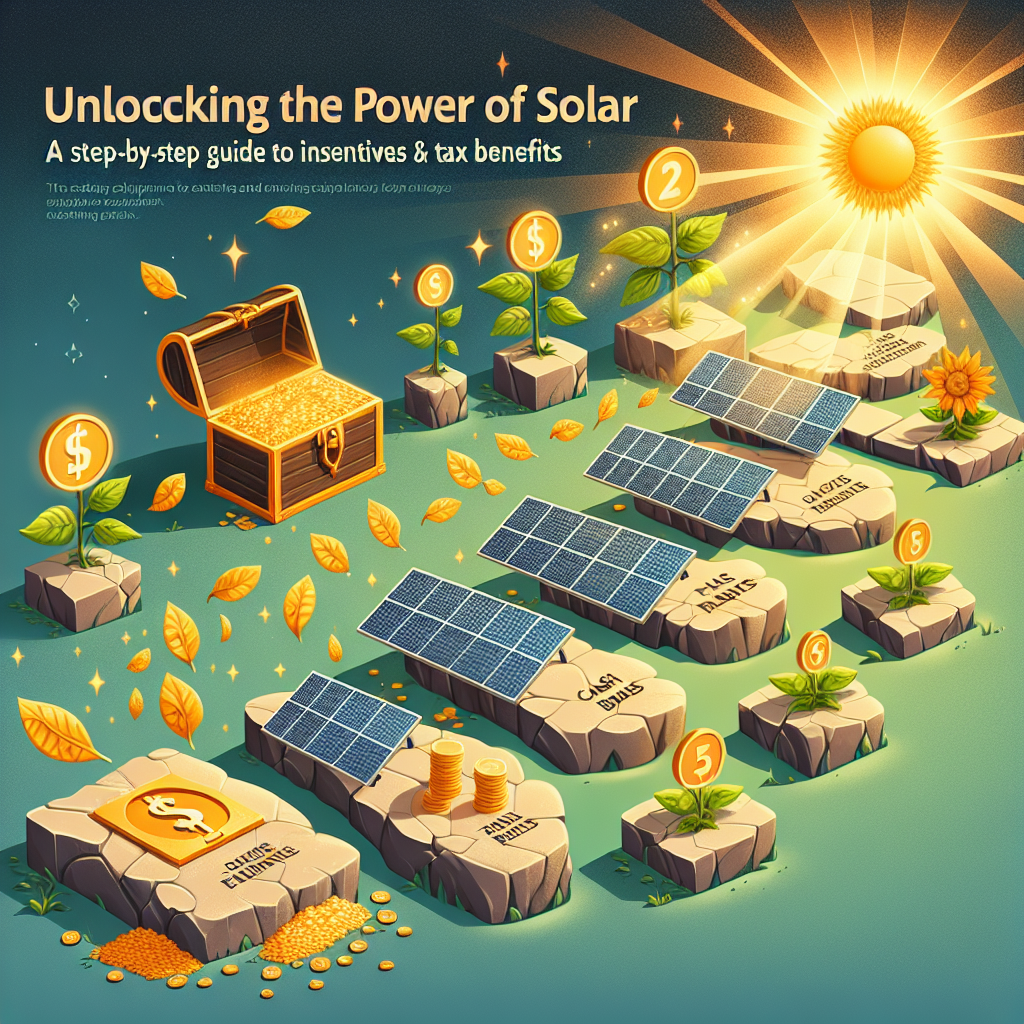The sun provides a powerful, renewable energy source that many homeowners and businesses are beginning to tap into. If you’ve been considering solar energy, you’re not alone. A growing awareness of climate change, coupled with significant advancements in solar technology, has made investing in solar power more attractive than ever. However, the potential upfront cost can be daunting. Thankfully, there are numerous incentives and tax benefits available that can help ease the financial burden. In this comprehensive guide, we’ll walk you through the steps to unlock the power of solar energy by understanding the incentives and tax benefits available to you.
Why Go Solar?
Before diving into the incentives and tax benefits, it’s essential to understand why going solar is a worthy investment. By harnessing the power of the sun, you can reduce your dependence on fossil fuels, lower your energy bills, and even increase the value of your property. Furthermore, as the demand for clean energy increases, so does the push for solar solutions from both government and private sectors.
Step 1: Understand Federal Solar Tax Credit
One of the most significant incentives for solar energy in the United States is the Federal Solar Tax Credit, also known as the Investment Tax Credit (ITC). Currently, this program allows you to deduct 26% of the total cost of your solar system from your federal taxes. This tax credit applies to a variety of solar energy systems, including photovoltaic (PV) systems, solar water heaters, and more.
Key Points About the ITC:
- Eligibility: You must own the solar system to qualify for the tax credit. If you lease the system or enter into a power purchase agreement (PPA), you typically won’t be eligible.
- Expiration Dates: Be aware that the percentage of the credit is set to decrease after 2023, so timely investment in your solar system is crucial.
Step 2: Explore State-Specific Incentives
In addition to federal incentives, various states offer their own solar incentives. These can range from tax credits and rebates to performance-based incentives and grants. To find out what’s available in your state, check with your local government and utility companies.
Some Common State Incentives:
- Rebates: Direct cash back for installing solar systems.
- Sales Tax Exemptions: Many states exempt solar equipment from sales tax, reducing the overall installation cost.
- Property Tax Exemptions: Some states allow homeowners to increase their property value without impacting their property tax assessments.
Step 3: Investigate Local Utility Incentives
Your local utility company may have incentive programs designed to encourage the adoption of solar energy. These can include:
- Net Metering: This program allows you to sell excess energy produced by your solar system back to the grid, essentially spinning your electric meter backward and resulting in lower energy bills.
- Feed-in Tariffs: Some utilities will pay homeowners for every kilowatt-hour of electricity generated by their solar panels.
Step 4: Look Into Green Loans and Financing Options
If the upfront cost of solar installation is a concern, consider exploring financing options. Many lenders now offer special "green loans" designed for renewable energy projects, which often come with lower interest rates.
Types of Financing Options:
- Solar Loans: These loans can fund the upfront cost of installation and allow you to pay it off over time, often with fixed monthly payments.
- Leases and Power Purchase Agreements (PPAs): With these options, a third party owns the solar system, and you pay them monthly for the energy produced. However, be mindful that you may not qualify for federal tax credits.
Step 5: Consult with Solar Experts
Navigating the incentives and tax benefits of solar energy can feel overwhelming. That’s where solar experts come in. They can help you determine the best options tailored to your situation and ensure that you take full advantage of available incentives.
Finding a Credible Installer:
Research local solar installation companies and read reviews. Ensure they’re reputable and have a track record of installations and customer service.
Conclusion: Your Path to Solar Power
Investing in solar energy is not just a smart financial move; it’s also a significant step toward a sustainable future. By understanding and leveraging the various incentives and tax benefits available, you can significantly reduce the upfront cost of solar installation and see a quicker return on investment.
As you embark on your solar journey, keep in mind that you’re not just investing in energy savings but also contributing to a greener planet for generations to come. Embrace this powerful energy source and unlock the full potential of solar. Your future, and the future of our planet, depend on it.


